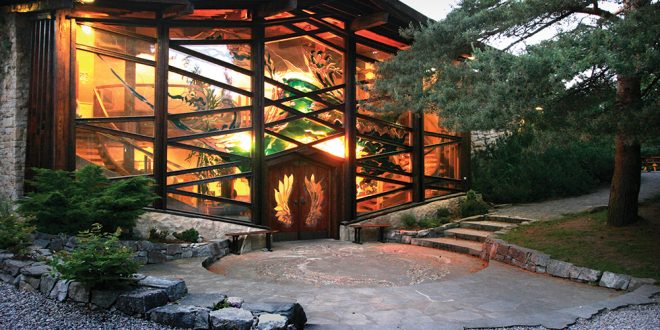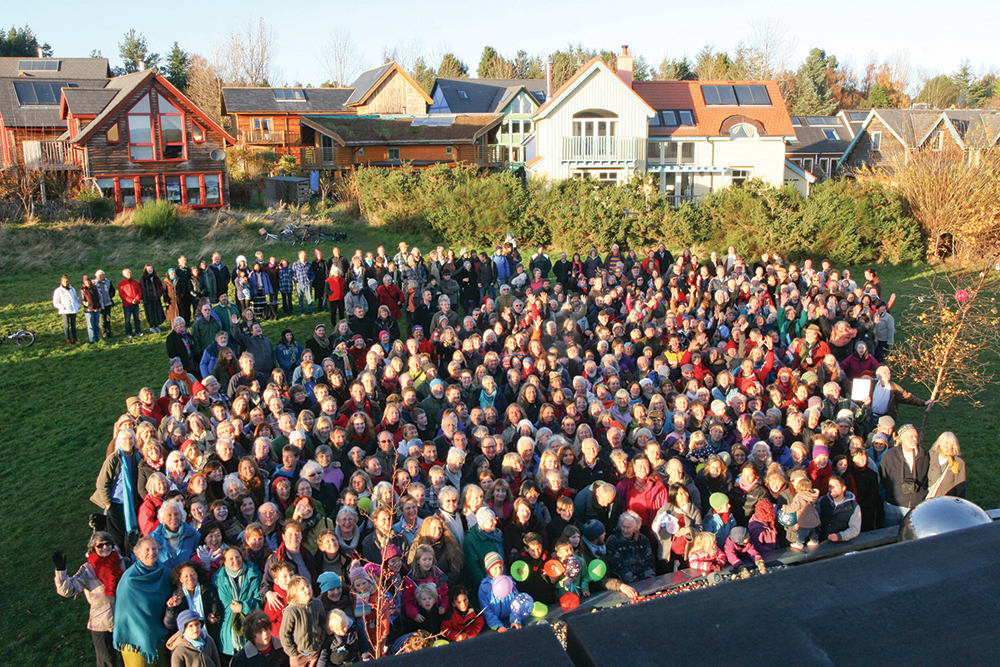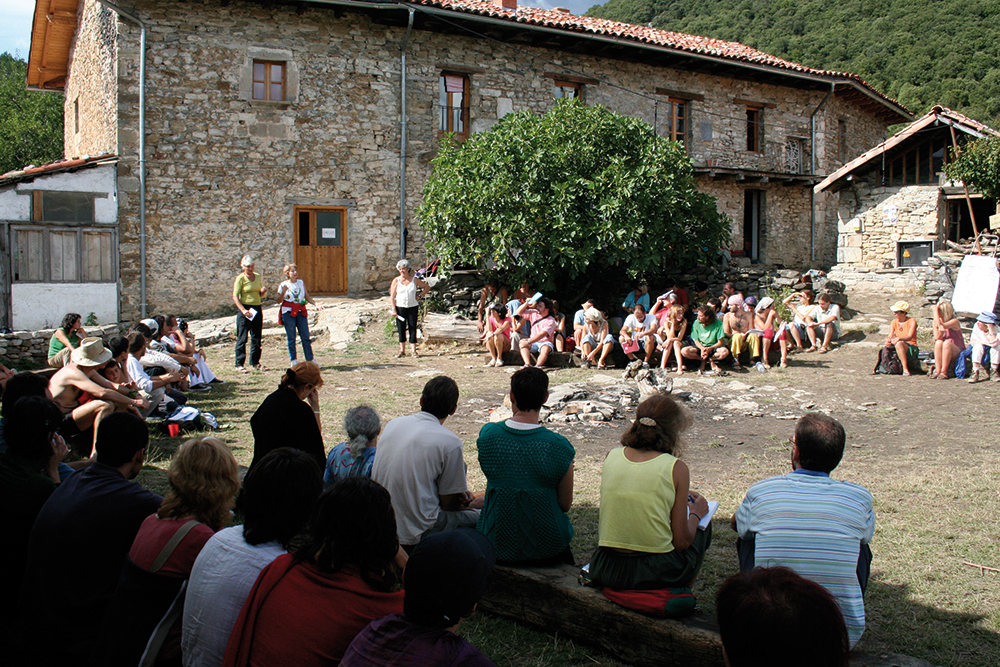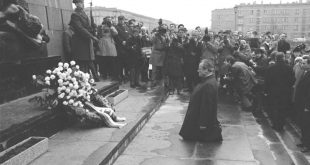Local solutions for global problems
Around 10,000 village and community projects worldwide have come together in the Global Ecovillage Network. They are village communities, urban areas or deliberately created living communities that jointly opt for a path of sustainability. They focus on five areas: ecology, the social aspect, culture, the economy and education. We present four projects in the second part.
Findhorn \ Scotland
The Findhorn Foundation in Scotland is one of the oldest existing eco-villages. On 17th November 1962, Eileen Caddy, Peter Caddy and Dorothy Maclean moved to a modest caravan park in Findhorn Bay with their caravan and the three Caddy children; they planted a garden in which they brought their spiritual and ecological knowledge to bear. It was like a miracle: soon there were 40-pound cabbages growing in the sandy soil, attracting both sceptical scientists and spiritual seekers. More and more visitors came to see this wonder, and soon programmes and guest accommodation facilities were needed. The building of seven cedar houses and art workshops, a community centre and a meditation room followed.
There are now 600 people living here: 120 permanent members are given accommodation and a small amount of pocket money for their collaboration, and 500 people have settled all around. Findhorn has the greatest concentration of social businesses in Britain (currently 45). The foundation itself has assets of five million pounds and an annual income of two million pounds. Its workshops for personal development and training in sustainability last between a few days and several months and are attended by over 2,000 people per year. Its ecological footprint is half the UK average and one of the lowest in the western world. The foundation is a UN-registered non-governmental organisation; and Eileen Caddy was honoured by Queen Elizabeth for her services a few years before her death in 2006.
Much has happened during these fifty years. The cabbages have settled down to an average size and miracles are less in demand than a healthy community spirit. Findhorn has developed from an “alternative to the mainstream” to being “complementary”: the community regularly advises local authorities, town planners, mayors and students on sustainability.
Lakabe \ Spain
In 1980, young non-violence activists from all over Spain took the decision to occupy an abandoned village in Navarra, to which no roads led in those days: Lakabe. As they had no money, they built with what they had, carrying cement and stone through the woods for hours on end. Mauge, one of the founding generation, says: “We were young and it was only a few years after the era of the dictatorship and its gloomy atmosphere. It was an experience of the radical appropriation of power.”
They completely rebuilt the old village and learned to become a community. All the agreements that were made at that time are still valid today. Work, money, decisions – everything is shared. But it wasn’t all easy. The principle of grass-roots decision-making led to endless meetings.
An ecological awareness came into being through their contact with nature; the wind turbine was part of this. They carried the 10-metre-long steel mast for this for miles through the forest.
In 1990, a dam was planned that would flood all the villages in the valley. Lakabe led the protests against this project. Many activists ended up in prison. The dam was built despite everything, but Lakabe was high enough to avoid being flooded. As the group had taken on a leading role during the period of resistance, they came into contact with everyone in the region, were respected by the villages, and their members were elected to the valley’s local council.
Today there are three generations living in Lakabe, the community is 100% self-sufficient in terms of energy, and 80% of its food comes from the region. Lakabe has its own school and a workshop programme for guests, who acquire ecological knowledge and learn about paths towards democratic decision-making.
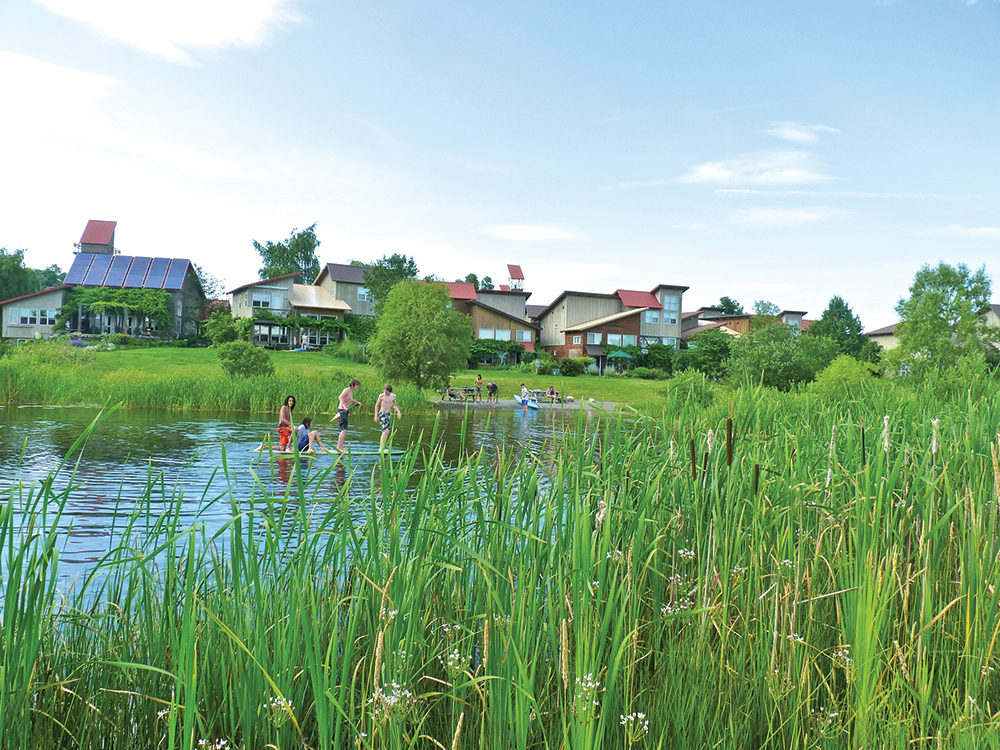
Ithaca \ USA
In 1990, the environmental activist Liz Walker from San Francisco helped to organise a protest march with 150 people across the USA. During the walk, the wish developed in many people not to return to their everyday routine afterwards. Liz put all her energy into the new project. Close to the town of Ithaca on the Finger Lakes of New York State, they found the ideal conditions. “We didn’t want to have a project for opting-out, but to be part of the mainstream. For us, this means following the path to a sustainable life together with politicians and universities.”
Today, the village stands eight kilometres from the centre of Ithaca on a 71-hectare site. It has three organic farms and two co-housing settlements. “Together with town planners, we have developed a new concept of land use for the USA,” Liz explains. “Through a sense of community and neighbourliness, people are prepared to build their houses closer together. Which leaves room for shared gardens, footpaths, picnic sites and playgrounds. This example is greatly imitated.”
They have won many awards for their zero-energy houses in the USA and have set new standards that are also being copied in the mainstream. They consistently implement the concept of solidarity agriculture: the consumers pay a fixed amount at the start of the year and in return receive baskets and crates of fruit and vegetables every week. In this way, the risks of agriculture are shared between producers and consumers.
Liz: “For me, it’s an adventure to live in a community with 250 people. It’s not always easy because everyone has their own opinion. But we complement each other, support each other and are always learning something.”
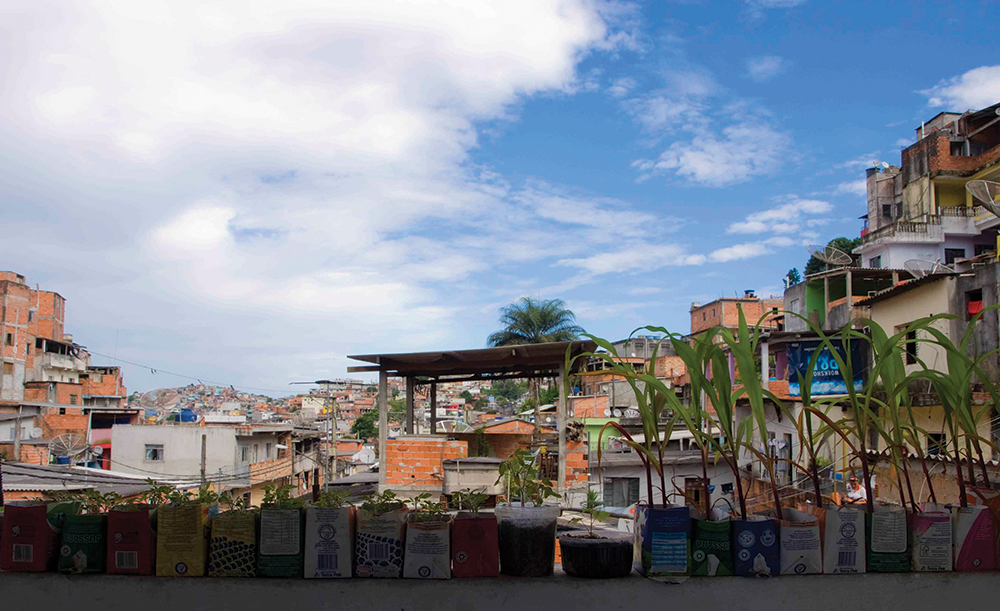
Favela da Paz \ Brazil
According to the UN, the Jardim Ângela district of São Paulo was one of the most violent slums in the world. Crime, drug dealers, youth gangs, street children and general poverty dominated the scene. Claúdio Miranda’s best friend was killed; he himself was arrested at the age of 13 during a police raid. “The policeman held a gun to my head and wanted me to prove that I was a musician. I had to play something on my saxophone for him. It worked. Since then, I have known that music is a life force.” Today, the policeman is one of his friends.
Claúdio, his brother Fábio, his wife Hellem and many friends run a music school that offers street children an alternative to drugs and violence. After a visit to Tamera in Portugal, they had an even bigger idea. Claúdio says: “We called it Favela da Paz – The Slum of Peace.” The family house gradually changed into an ecological centre, with a biogas system for cooking on the roof, permaculture gardens on the outside walls and solar showers. Hellem: “The neighbours became curious. We now give courses in vegetarian cooking and urban permaculture.”
Coming together and learning instead of fighting and stealing started to find imitators. Parents in the area redesigned the school yard and planted trees. They successfully stood up to the destruction planned on account of the Football World Cup. And every month there’s a big samba party.
 Eco123 Revista da Economia e Ecologia
Eco123 Revista da Economia e Ecologia

